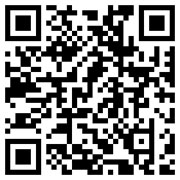In October 12, 2006, the European Union formally adopted 3 new resolutions related to the RoHS directive (directive 2002/95/EC) (2006/690/EC, 2006/691/EC, 2006/692/EC).
According to the RoHS directive, electrical and electronic equipment shall not contain 6 kinds of harmful substances. From July 1st this year, in the European Union market sales of electrical and electronic equipment contained in the homogeneous material, lead, mercury, six valence chromium, PBB and PBDE two content not more than 0.1% of the weight, cadmium content shall not exceed 0.01%; exempted products except.
The exemption items are attached to the directive annex. 9 exemptions were added to the new resolution, of which 8 were related to lead and 1 were related to six valence chromium, with the following points:
21. lead and cadmium in printing inks for enamels on borosilicate glass.
Lead 22. as impurity in rare earth iron garnet Faraday rotators in optical fiber communication systems.
23. lead in fabrics with small pitch components.
Lead in solders for 24. pass disk and planar array ceramic multilayer capacitors.
Lead oxide for use in components of plasma display panel (PDP) and surface conduction electron emission display (SED) 25.
26. black light blue (BLB) lead oxide in the glass envelope.
27. lead alloy used as converter solder in high power loudspeaker.
28. metal plate corrosion protection coating, corrosion protection agent and the six valence chromium contained in electromagnetic interference barrier of third kinds of equipment (IT and communication equipment) in 2002/96/EC directive. The exemption is valid until July 1, 2007.
29. the lead contained in crystal glass referred to in Annex 1 (first, second, third and four) of directive No. 69/493/EEC of the council.
In April 28, 2006, the European Union formally announced resolution 2006/310/EC, amended the annex to the directive on limiting the use of six harmful substances in electronic and electrical equipment (RoHS) of the original 2002/95/EC, and added the scope of the exclusion clause. At the same time, the five major points listed by 2006/310/EC are related to "lead":
Sixteenth: lead in silicate coated tubes of tubular incandescent lamps.
Lead in linear incandescent lamps with silicate coated tubes.
Seventeenth point: lead halide light emitting agent for high intensity discharge lamps (HID) used in professional copying equipment.
Lead halide as radiant agent in High Intensity Discharge (HID) lamps used for professional reprography applications.
The eighteenth point: sun tanning phosphorus (e.g. BSP) put the lamp fluorescent powder lead as activator (lead content below 1%), and two compound printing, lithographic printing reprography, insect traps photochemical and curing processes containing phosphors used (e.g. SMS) put the lamp fluorescent powder lead as activator.
Lead as activator in the fluorescent powder (1% lead by weight or less of lamps when used) discharge as sun tanning lamps containing phosphors such as BSP (BaSi2O5:Pb) as well as when used as specialty lamps for diazo-printing reprograp containing phosphors such as SMS (Sr, Ba) 2MgSi2O7:Pb).
Nineteenth points: lead in the main amalgam containing PbBiSn-Hg and PbInSn-Hg components in small energy saving bulbs and lead in PbSn- containing auxiliary amalgam.
Lead with PbBiSn-Hg and PbInSn-Hg in specific compositions as main amalgam and with PbSn-Hg as auxiliary amalgam in very compact Energy Saving Lamps (ESL).Hy, lithography, insect traps, photochemical and curing processes containing phosphors such as SMS (Sr, Ba) 2MgSi2O7:Pb).
Twentieth point: lead oxide in glass in front of front and rear lithographic fluorescent lamps in liquid crystal display. Lead oxide in glass used for bonding front and rear substrates of flat fluorescent lamps used for Liquid Crystal Displays (LCD)
Contact:Mr Mo
Phone:+86.13510839855
Tel:+86.0755-28121215
E-mail:410466188@qq.com
Address: Shenzhen District, Longhua city big wave South River Industrial Zone, river Sheng Wen Chuang Park 4 Building 402-403
